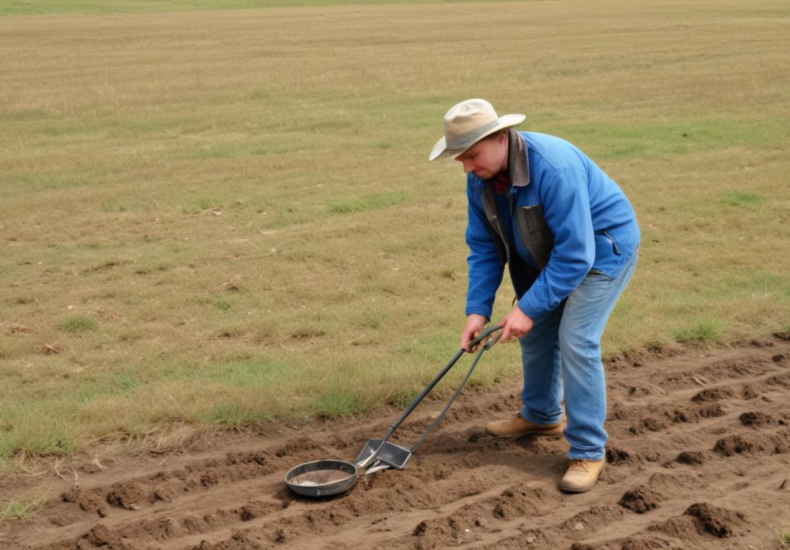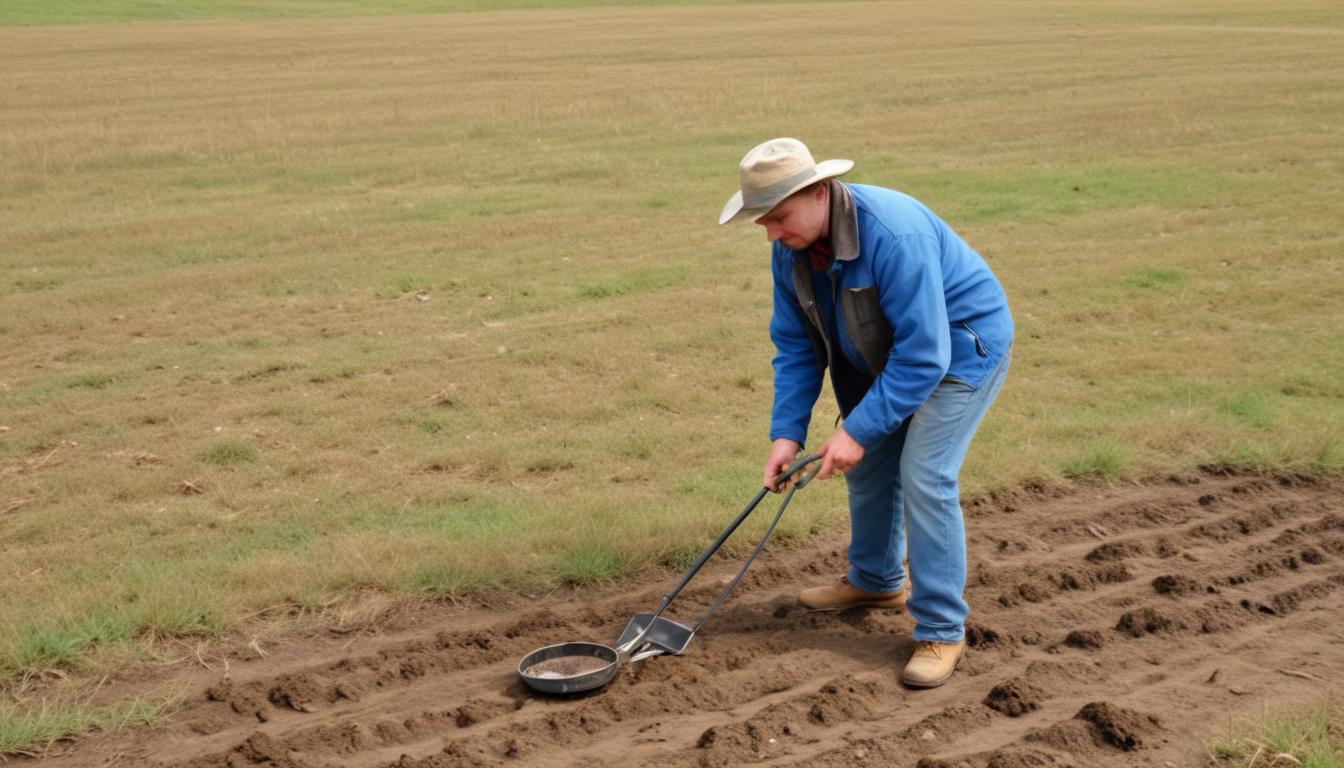
Tips for metal detecting in old homesteads
To set yourself up for a successful treasure hunt in old homesteads, having the right equipment is crucial. First and foremost, you need a reliable metal detector. Choose one that is capable of differentiating between metal types and depths, which can save time and increase your chances of finding valuable items. Additionally, a pinpointer can help you narrow down the exact location of buried items once your detector alerts you to their presence.
Carrying a digging tool specifically designed for metal detecting is also essential. Such tools are made to minimize damage to potentially historical sites and speed up the recovery of targets. A hand trowel or a digging knife will usually suffice for softer soils, while a heavier digging tool might be necessary for tougher grounds. Further, ensure you have a finds pouch or a container to safely carry any relics or coins you uncover.
Next, appropriate clothing is important for protection and comfort while on-site. Long pants and sturdy boots will protect you from underbrush and snake bites. Gloves are beneficial for digging and handling potentially sharp objects. If you are detecting in areas with a lot of sun exposure, consider a hat and sunscreen to protect yourself from UV rays.
Lastly, always bring a first-aid kit, plenty of water, and some snacks. Metal detecting can be a lengthy endeavor, and staying hydrated and energized is key to maintaining your focus and enjoying the experience. A small backpack or a utility belt can help carry your essentials conveniently without interfering with your mobility around the site.
Armed with the right tools and supplies, you’ll be well-prepared to explore and perhaps unearth pieces of history hidden within old homesteads.
Understanding the property’s history
Before stepping foot on an old homestead for metal detecting, gaining a deep understanding of its history is not only fascinating but can significantly enhance your chances of success. Investigating the background of the property can give you clues about where to start searching and what types of artifacts you might find. For example, knowing whether the area was predominantly agricultural, industrial, or residential can help you predict the remnants that may be present underground.
To begin your historical research, you can start with local libraries and historical societies which often have records and maps that are not available online. Old maps can reveal previous structures like barns, outhouses, and wells that are likely spots for finding older items no longer visible on the surface. Additionally, old photos, property records, and newspapers can help you piece together who lived there, what their lives were like, and how the property has changed over time.
It’s also a good idea to speak with longtime residents or descendants who might have intimate knowledge of the property’s history. They can offer personal anecdotes and perhaps even tips on where you might start your search. These conversations can often lead to discoveries that are not documented in any public records.
Understanding the local historical context is crucial too. Knowing the broader history of the area during the time the homestead was in use can provide further clues. For instance, if an old site was near a battlefield, trade route, or was used for a specific industry, these aspects can guide your detecting strategy and increase your likelihood of uncovering specific types of relics.
Arming yourself with this knowledge not only prepares you for a more targeted and potentially fruitful search but also enriches the entire experience of metal detecting at old sites. Each find will feel more significant when you know the history it might represent, turning each outing into a personal archaeological adventure. This deeper connection to the past is what often turns a hobby into a passion for many in the metal detecting community.
Techniques for effective scanning
When scanning for treasures at old homesteads, the right techniques can make the difference between finding commonplace items and uncovering rare and valuable relics. Here are some key approaches to ensure your metal detecting efforts are both efficient and effective.
First, grid the area. Creating a grid pattern is essential for thorough scanning. Use flags or markers to divide the property into manageable sections, ensuring you cover each area systematically. This method minimizes the chance of missing spots and helps keep track of which areas have already been scanned.
Adjust your detector settings according to the soil conditions and desired targets. Different metals respond at varying frequencies, so if you know the history of the site, as discussed in previous sections, set your detector to optimize detection of the metals that are likely prevalent. For instance, an old homestead might have more relics made of iron, so a lower frequency might yield better results than a higher one aimed at detecting gold.
Swing your detector slowly and steadily. Quick movements can cause you to miss signals, especially if they are faint. The coil should be kept close to the ground and swept in a consistent pattern. Overlapping each sweep slightly is crucial to ensure no ground is left unchecked.
Listen carefully to your detector’s audio signals and watch the visual cues. Learning the different tones and what they represent can significantly aid in identifying what lies beneath before you even start digging. Many modern detectors provide detailed information about detected objects, including probable depth and composition. This allows you to make informed decisions about whether or not to excavate.
Lastly, be patient and persistent. Metal detecting at historical sites like old homesteads often requires time and persistence, as the ground can be littered with various metals that may not all be of value. Take breaks, stay hydrated, and review the site’s history periodically to refresh your understanding of potential hotspots.
By implementing these techniques, each sweep of your detector becomes a well-informed search, rooted in the history and unique characteristics of the site. This strategic approach not only makes detecting more successful but also more enjoyable as you piece together the story of the homestead with each find.
Identifying and preserving found items

Once you have unearthed potential treasures at old sites like homesteads, proper identification and preservation of these items are paramount, especially if they might hold historical significance. Here are some detailed strategies to guide you in this crucial phase of metal detecting.
Firstly, handle all found items with care. Older artifacts are often delicate and can be further damaged by careless handling. If you are unsure of a find’s fragility, err on the side of caution. Use soft brushes, like those used in archaeological digs, to gently remove any loose soil. A small amount of water can be used for rinsing, but avoid harsh cleaning chemicals that can strip away important details or markings from your discoveries.
Identifying found items can be akin to solving a historical puzzle. Small relics can be identifiers of the daily life of past residents, such as buttons, silverware, and tools, while larger items may relate to the homestead’s structure or agricultural functions. For proper identification, consult historical databases, reach out to metal detecting communities online, or collaborate with local historians and archaeologists. These resources can provide insights into the age and usage of your finds, which greatly contributes to understanding the overall history of the property.
Preserving what you find is critical to ensuring that these items outlast your initial discovery. Depending on the nature and material of the found object, different conservation methods should be employed. Metals like iron demand specific care to prevent rapid deterioration; storing them in a controlled environment with desiccants to manage humidity is a good start. More resilient materials like certain ceramics or glass may require less stringent conditions.
Documentation is another key aspect of preservation. Keeping detailed records of where each item was located can offer invaluable information for future research and artefact correlation. Photographing your finds and noting the accompanying details such as depth, nearby structures, and the item’s condition upon excavation can add to the collective knowledge of the site’s history.
Lastly, ensuring that your collection practices respect current laws and agreements with property owners is equally important in the preservation narrative. Transparent reporting of what you discover not only fosters trust but can also contribute to the larger academic understanding of the region’s history. Often, property owners and local authorities appreciate receiving concise documentation and detailed information about the artefacts unearthed on their properties.
Through careful handling, accurate identification, meticulous preservation, and comprehensive documentation, the items you extract from old homesteads can continue to tell stories of the past to future generations. This heritage-focused approach enriches the detecting experience, letting each item you find contribute a small piece to the vast mosaic of human history.
Legal considerations and permissions
Before embarking on your metal detecting adventure at old sites like homesteads, it’s crucial to understand and adhere to the legal considerations and permissions required. Metal detecting is not merely a hobby but also a practice governed by laws and regulations that protect historical sites and private properties. The following insights offer guidance on navigating these complex legal landscapes.
Firstly, always gain explicit permission from the landowner before detecting on private property. Trespassing laws are strictly enforced, and detecting without consent can lead to legal repercussions. A verbal agreement may suffice, but securing written permission is a safer and more professional approach. This document should outline the locations you are allowed to explore and any conditions the landowner has imposed.
Beyond private property, many old homesteads might fall within areas protected by state or federal law, especially if they are recognized as historical sites. These areas often have strict regulations governing whether and how metal detecting is permitted. To comply with these rules, check with your local or national historical commissions or preservation offices. They provide crucial information on which lands are protected and what activities are allowed. In some cases, a special permit may be required, and detecting without one can lead to severe penalties.
If you plan to search in public areas, such as parks or near waterways, these typically fall under city, state, or federal jurisdiction. Such areas might have their own sets of rules regarding metal detecting. Many public spaces require a permit that stipulates when and where detecting activities can take place, often limiting them to specific zones and times to minimize disruption to the environment and other public activities.
When you do find something of potential historical value, further legal obligations usually come into play. Items of a certain age or historical significance may legally belong to the state or historical society, not the finder. It’s paramount to report such finds to the authorities so they can be appropriately cataloged and preserved for study or public display, depending on local laws. Not reporting them can constitute a legal offense and rob the community of potential historical insights.
Understanding and respecting the legal frameworks governing metal detecting at old sites like historical homesteads is essential. Not only does this compliance affirm your integrity as a hobbyist, but it also helps preserve the historical and cultural significance of these locations. Through careful navigation of these legal considerations and maintaining transparent communication with property owners and authorities, you ensure that your detecting endeavors are both enjoyable and responsible, contributing positively to the shared history and respect for heritage preservation.
You may also like
Archives
Calendar
| M | T | W | T | F | S | S |
|---|---|---|---|---|---|---|
| 1 | 2 | |||||
| 3 | 4 | 5 | 6 | 7 | 8 | 9 |
| 10 | 11 | 12 | 13 | 14 | 15 | 16 |
| 17 | 18 | 19 | 20 | 21 | 22 | 23 |
| 24 | 25 | 26 | 27 | 28 | 29 | 30 |
Leave a Reply